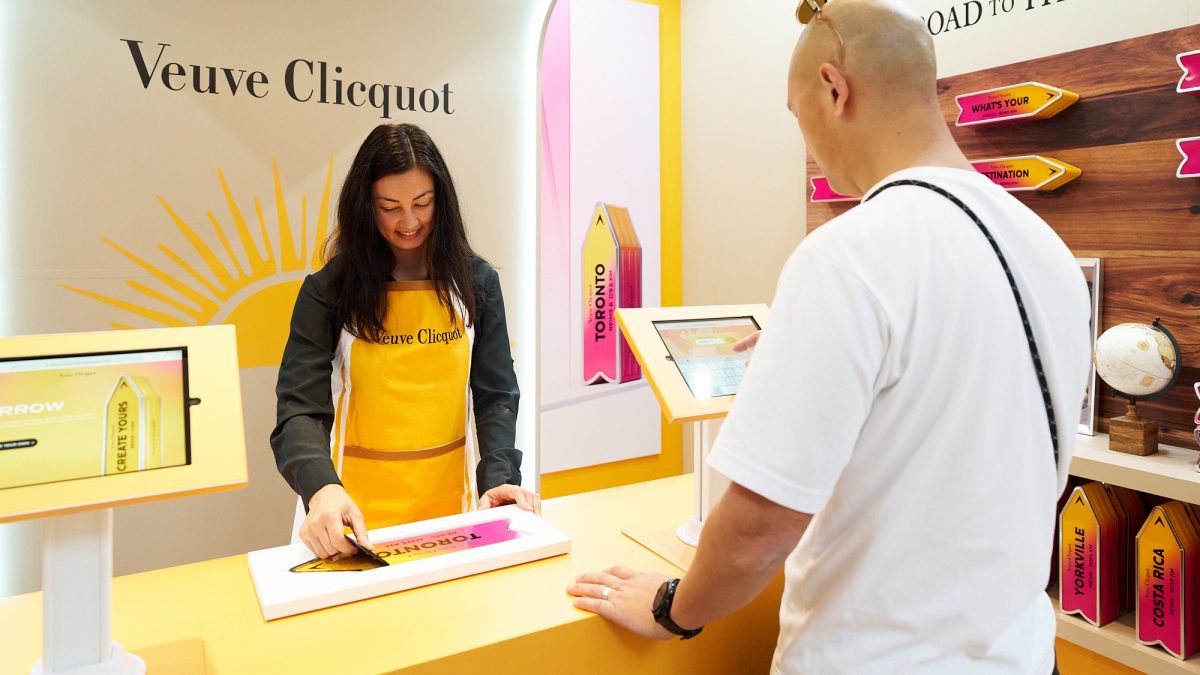Tasting Is Believing: How Strategic Brand Samplings Build Trust and Drive Sales

The Final Touch: Why Exit Sampling Leaves a Lasting Brand Impression
July 23, 2025
Beyond the Booth: Crafting Experiential Marketing Programs That Actually Convert
August 6, 2025In a competitive market, sampling is one of the best ways to give your consumers a, well, taste of your product.
The benefits of strategic brand samplings are pretty straightforward when you think about it: when people try your product, they’re more likely to buy it.
Of course, behind every effective sampling campaign is more than a tray and a smile. It’s also a carefully planned strategic event designed to build trust, spark conversation, and drive measurable results.
So, whether you’re launching a new product, entering a new market, or supporting an ongoing campaign, here’s how strategic brand samplings can turn curious passersby into loyal customers.
1. Sampling Builds Instant Credibility
Consumers are increasingly skeptical about traditional advertising these days. Compounding this, ads are often so oversaturated that they sometimes fade into the background without even being noticed.
Fortunately, people tend to place a lot more trust in things they experience – and particularly with their senses. That’s why sampling works so well.
When someone tastes, touches, or tries your product in a real-world setting, you skip the pitch and let the product speak for itself (along with a little help from your client’s senses).
Done well, this builds not only creates immediate trust but makes your first impression a good one – leading to future positive brand associations.
2. It’s Not Just About Freebies. It’s About The Right Fit
Random samples don’t always work. If it’s the wrong audience, setting, or context, they can feel forgettable or even intrusive.
Targeted sampling, on the other hand, where product meets context, and your audience is well-researched, feels intentional and memorable.
Consider the following associations:
- Sampling protein bars at fitness expos
- Offering skincare samples in beauty stores
- Distributing new beverage flavours at summer festivals
These sampling and location pairings feel natural, unforced, and exactly what the moment needs. Thus, by matching your product to the environment, you create relevance for your product, which increases both impact and the likelihood that people will keep it top of mind.
3. The Right Staff Make All the Difference
Sampling isn’t just about distribution. It’s not about simply handing out X amount of samples on a given day and then being done with it. It’s about driving connections between your product and your audience.
While time and place make a difference, so too do the staff you have on hand sharing your samples. Trained brand ambassadors in this case can make all the difference as they:
- Know the product and its selling points
- Engage authentically with guests
- Answer questions and gather feedback
- Encourage next steps like purchase, follow, or share
With the right team in place, your sampling effort becomes a live brand experience, and not just another giveaway.
4. Data + Feedback Fuel Smarter Marketing
Modern sampling campaigns don’t typically end when the last sample is given away. They’re also powerful tools for what happens after. Consider:
- Collecting consumer insights from a survey
- Tracking impressions and engagement through an app
- Capturing leads and feedback in real time through a QR code
Taking advantage of things like QR codes, digital surveys, sampling apps, or other event technology, allow brands to measure performance and optimize future campaigns with real-world data.
After all, there’s a ton of data that can be gathered from any large scale interaction with customers. But also, and more importantly, keeping in touch with your customers after the sampling shows that you care about the connection, that you value their feedback and future engagement.
5. Sampling Supports the Full Funnel
Lastly, when it comes to building trust and confidence in your product, a well-designed sampling campaign should touch every stage of the buyer journey:
- Awareness: “I’ve heard of this brand.”
- Consideration: “I tried it. It’s actually great.”
- Conversion: “I bought it on the spot.”
- Loyalty: “I now look for it every time I shop.”
This means that when it comes to planning a sampling event, there’s often the before and after strategy that should be thought out, including plenty of research too.
By focusing on the experience and not just the product you turn a small moment into a strong, long-term relationship.
Tigris Events: Brand Samplings That Drive Real Results
At Tigris Events (powered by Simon Pure), we help brands plan and execute strategic sampling programs that combine audience targeting, smart logistics, professional staffing, and unforgettable guest experiences.
People don’t want to be sold to. They want to believe in what they’re buying. Sampling creates that belief.
Whether you’re sampling in one city or across Canada, we’ll make sure every taste leads to trust and every interaction builds your brand.
Let’s create a sampling campaign that people believe in and buy into. Contact us today!
Looking for more ideas about sampling? We covered 8 mouthwatering ideas for food samplings previously.




